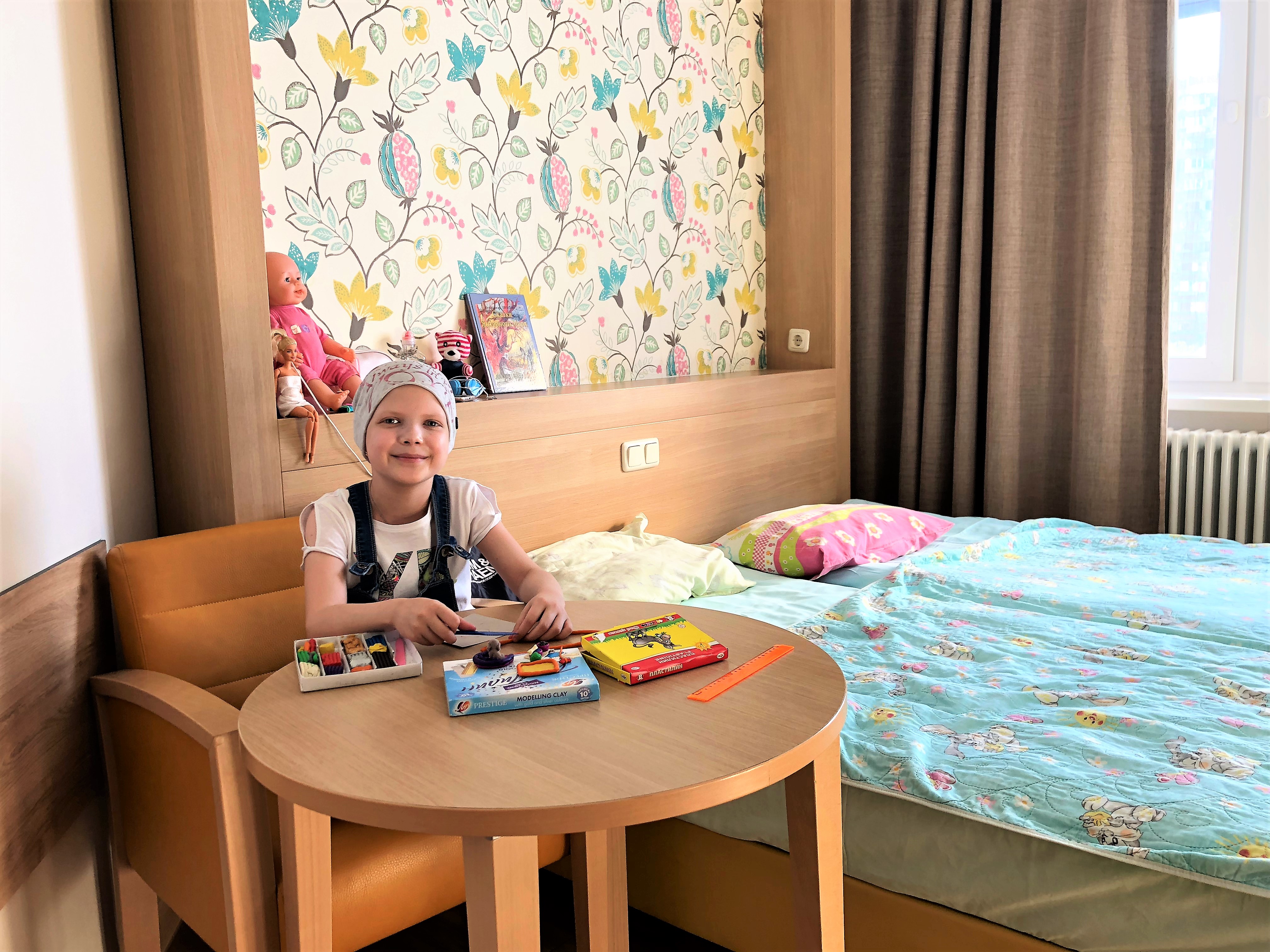At nine years old, Nastya Ivanova knows that some illnesses can kill. She’s already spent half a year being treated for nephroblastoma. The tumour was diagnosed in late January, and since February Nastya has been living and receiving treatment far from home, at the Dmitry Rogachev Centre for Paediatric Haematology, Oncology and Immunology in Moscow. We came to see Nastya in hospital and found out that on top of the treatment she’s been finding time for art and studying.
Nastya’s glad that the Dmitry Rogachev Centre is nothing like an ordinary hospital. The doctors, other medical staff, attending physicians and volunteers from Podari Zhizn have given their all to make the place feel like home, warm and comfortable.
”It’s nice here,” Nastya tells us. “You can go for walks, and the doctors are kind, always joking and making things fun for us. It helps.”
The center’s specialists support their young patients with more than just jokes. They’re always ready to explain therapy in a simple and accessible way to avoid intimidating children and parents alike with confusing medical terms and complicated treatments. Nastya’s psychologist showed her an educational cartoon in which a boy turned out to have a severe illness literally eating up his body, and fought it off with the help of doctors and medicines. MRI scans are explained by example. A toy crocodile gets examined using a miniature model of an MRI machine, and a video follows it through the entire process.

Model MRI machine
On our way to Nastya’s ward, we saw bright drawings and fun ceramic handicrafts in the hospital’s hallways. The charity’s volunteers run creative workshops, teaching kids to draw festival posters, make collages and mould clay.
“The volunteers helped me draw a poster, and now it’s up in the blood donation room.”


Kids’ drawings and handicrafts
Svetlana, Nastya’s mother, told us that the hospital runs an important and essential educational project called “Uchim&Znaem”. Launched in 2014, it helps children like Nastya get a comprehensive general education remotely during long-term medical care. They can catch up on their schoolwork, finish the term with good grades or even take their finals. “The Uchim&Znaem school has books, but more often we read on tablets,” says Nastya. For children in long-term care, education via tablets is not only more convenient but also safer, since paper can carry all sorts of viruses and bacteria while tablets are easy to disinfect.

Nastya in her ward
We talked to Nastya in the pension ward (the wing of the center where children and their parents live between chemotherapy courses), to which she’d just come back after a five-day chemotherapy course in the treatment department. She and her family were getting ready to go for a walk, waiting for it to get cooler outside. Before we left, we asked Nastya one more question: did she know what donors were?
“Donors are people who give blood in hospital to help children. Some give bone marrow, and some donate money to the charity. Please say hi to them from me and give them a great big thank you for helping children get their health back.”
We’d like to thank all our donors and fundraisers for helping children with oncological illnesses. It’s thanks to you that the children in Gift of Life and Podari Zhizn’s care are getting the most cutting-edge treatment and the medical care they need. Thank you so much!

